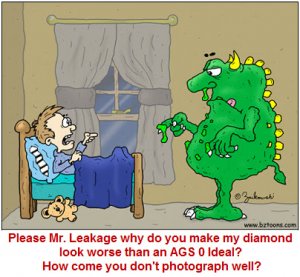spicytuna
Rough_Rock
- Joined
- Mar 21, 2010
- Messages
- 68
[/quote]
The arrow pattern is caused by obstruction(reflection of the viewer blocking the light) if you don''t get that by now there is no sense even talking to you because that is diamond 101 and if you don''t understand that simple concept by now it is a waste of time even talking to you.
To much obstruction is an issue also.
[/quote]
Wow...all of us "regular folk" should just pack up and go home. I have one year in Optics, 3 years of Ophthalmic Optics Graduate studies, and 10 years of experience under my belt. Granted, its not diamond optics, but I think that we all need a good refresher course every now and then...don''t you? RD brings up a lot of good questions...questions that I would like to have answered as well. That is why I am here. I didn''t realize that we were wasting the experts'' time.
The arrow pattern is caused by obstruction(reflection of the viewer blocking the light) if you don''t get that by now there is no sense even talking to you because that is diamond 101 and if you don''t understand that simple concept by now it is a waste of time even talking to you.
To much obstruction is an issue also.
[/quote]
Wow...all of us "regular folk" should just pack up and go home. I have one year in Optics, 3 years of Ophthalmic Optics Graduate studies, and 10 years of experience under my belt. Granted, its not diamond optics, but I think that we all need a good refresher course every now and then...don''t you? RD brings up a lot of good questions...questions that I would like to have answered as well. That is why I am here. I didn''t realize that we were wasting the experts'' time.








300x240.png)